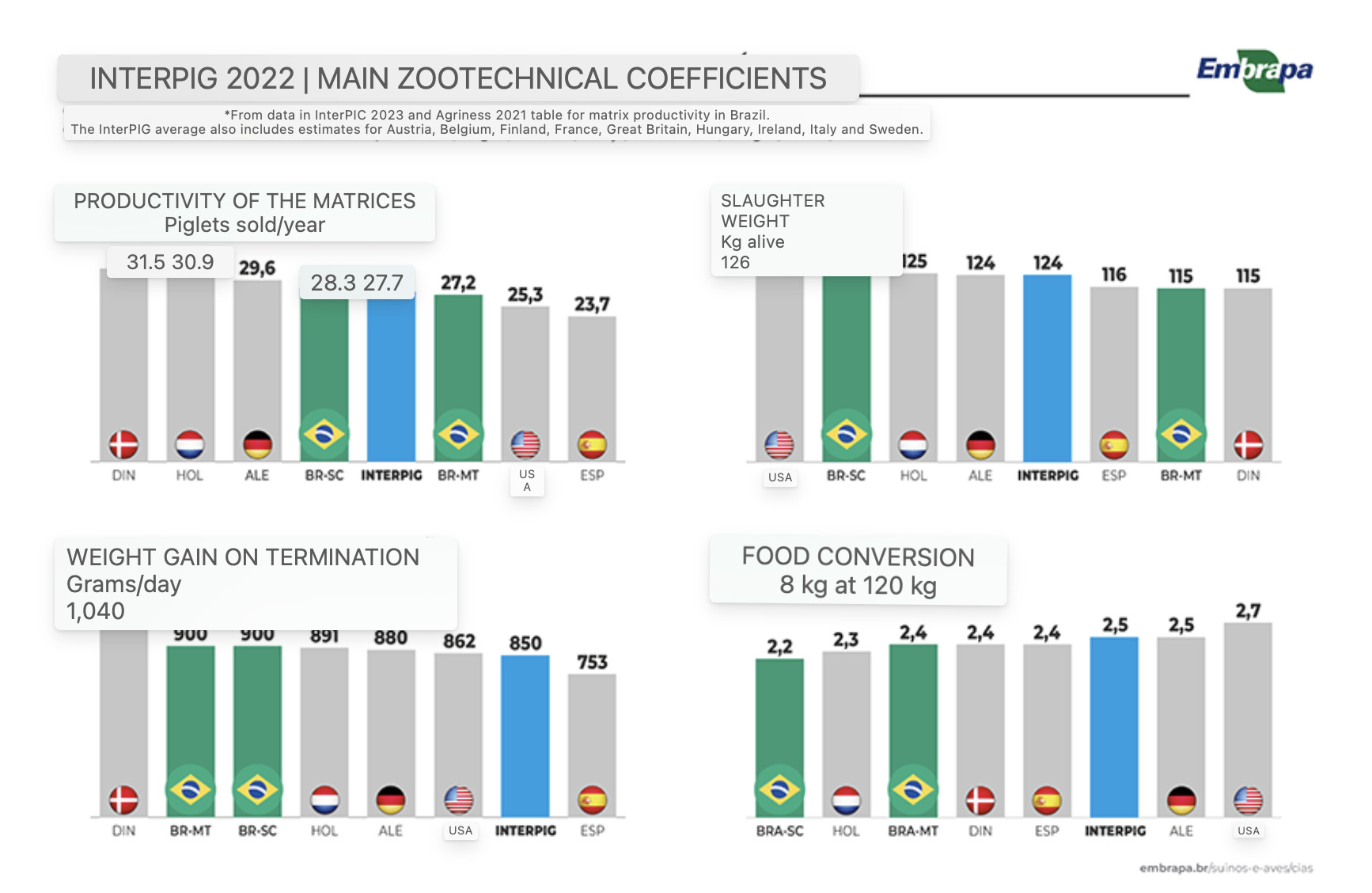Brazil pork exports expected to expand next year – Embrapa

The general picture for Brazilian pork producers improved greatly in 2023, reports the Brazilian Agricultural Research Corporation (Embrapa) reports that the general picture for Brazilian pork producers improved greatly in 2023. Feed prices fell, and other input costs stabilised, except for electricity and the increase in wages. The prices received per kilo of live pigs also show a recomposition trend in most countries. As a result, Embrapa believes opportunities for Brazilian exports next year will increase.
“Today [these exports] occupy the fourth position in the international pork market, but can take third place if shipments from Brazil exceed those from Canada,” an unnamed researcher said. “If this is reflected in the prices received by the producers, there will be a positive impact on profit margins.”
The main factors that explain Brazil’s lower costs compared to these countries are related to productive efficiency and prices. On the one hand, the country has presented competitive zootechnical coefficients compared to most of its competitors, the result mainly of the incorporation of technology and the health of the herds achieved with investments in biosecurity on farms and in agricultural defence.

Also noteworthy are the lower remuneration of labour and the lower cost of facilities. In the case of salaries, Brazil has levels much lower than those practiced abroad; the hour worked here, in 2022, was around US$ 3, while in an important competitor such as Spain, it is at US$ 16.29.
However, the cost of animal feed was the main determinant. The Mato Grosso swine industry obtained the lowest cost of feeding in this comparison. In that state, an average of US$0.87 was spent to produce one kilogram of live pigs in view of the low feed conversion and the lower price of the feed.
In Santa Catarina this value was around US$1.02 and was determined by the low food conversion, in view of higher feed prices. Denmark and the United States deserve to be highlighted, with a cost of US$0.96 and US$ 1.03 per kilogram of live animal, respectively.
Read also
Wheat in Southern Brazil Impacted by Dry Weather and Frosts
Oilseed Industry. Leaders and Strategies in the Times of a Great Change
Black Sea & Danube Region: Oilseed and Vegoil Markets Within Ongoing Transfor...
Serbia. The drought will cause extremely high losses for farmers this year
2023/24 Safrinha Corn in Brazil 91% Harvested
Write to us
Our manager will contact you soon



